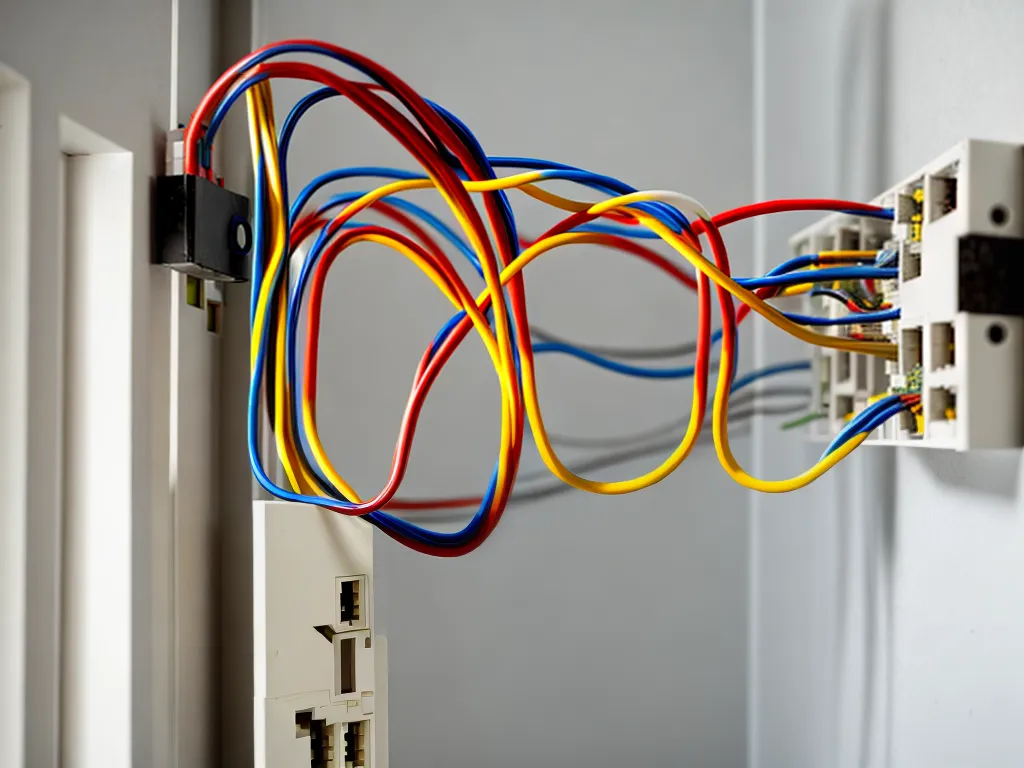
As a homeowner tackling DIY electrical projects, I've learned there are some outdated indoor wiring rules that are worth forgetting about. Adhering to modern electrical codes and best practices ensures my electrical work is safe, efficient and up to code. Here's an overview of some antiquated indoor wiring rules I no longer follow:
Using Older Gauge Wire
In the past, 12 AWG or 14 AWG wire was commonly used for 15 amp and 20 amp household circuits. However, modern electrical codes now recommend using thicker 12 AWG wire for nearly all 15 amp circuits and 20 amp circuits. There are several benefits to using thicker wire:
- It allows for less voltage drop over long wire runs. Thinner wire has higher resistance, leading to more wasted energy and voltage drop.
- Thicker wire can better handle higher loads without overheating. This reduces fire risk.
- It provides more room for future upgrades. If I ever need to increase the circuit load, 12 AWG wire will be able to handle it better than 14 AWG.
So when wiring new 15 amp circuits, I always use 12 AWG wire now instead of outdated 14 AWG.
Not Using Cable Staples
I used to think you could just run NM electrical cable loose through joist cavities. However, modern electrical codes require securing cables every 4.5 feet with approved cable staples or clamps. Some reasons this is now required:
- It prevents cables from falling into dangerous contact with insulation or other materials.
- It reduces stress on wire connections if cables are pulled on.
- It helps organize and guide cables during installation.
Properly installing cable staples keeps my wiring neat, safe and up to code.
Overloading Circuits
General wisdom used to be that circuits could handle 15-20 amps continuously. In reality, continuously loading circuits that heavily is unwise. Now I follow the 80% circuit load rule - no single circuit should exceed 80% of its rated capacity for continuous loads.
So for a standard 15 amp household circuit, I keep continuous loads under 12 amps. This provides a safety margin and reduces fire risk from overheating. I also avoid putting high-draw appliances like hair dryers, vacuums and power tools on the same circuit to prevent tripping breakers. Following the 80% load rule ensures my electrical circuits aren't dangerously overloaded.
Not Using AFCI Protection
AFCI (Arc-Fault Circuit Interrupter) breakers are now required by code for most household branch circuits. Unlike standard breakers, AFCIs detect dangerous electrical arcing and shut power off before it causes a fire.
However, upgrading my older home's breaker panel for full AFCI coverage has been expensive. While the new code is safer, AFCI upgrades are cost prohibitive for many homeowners. When doing wiring projects, I've been installing AFCI breakers selectively for now. But keeping my older standard breakers is against modern codes despite the cost.
Mixing Aluminum and Copper Wiring
When DIYing electrical upgrades, I used to join copper and aluminum wiring together with special connectors. However, this mixture can cause corrosion and loose connections over time. Nowadays, the accepted practice is to use copper pigtails to transition between aluminum and copper rather than connecting them directly. Though more labor intensive, keeping copper and aluminum fully separated ensures safe, maintenance-free connections.
Conclusion
While not an exhaustive list, these examples demonstrate how modern indoor wiring best practices have made some previous DIY methods obsolete. By reading up on the latest National Electrical Code and following manufacturer installation guidelines, I can ensure my home electrical projects meet current safety and performance standards. While some outdated wiring rules may still get the job done, adhering to modern codes is worth the extra effort for reliability and peace of mind.